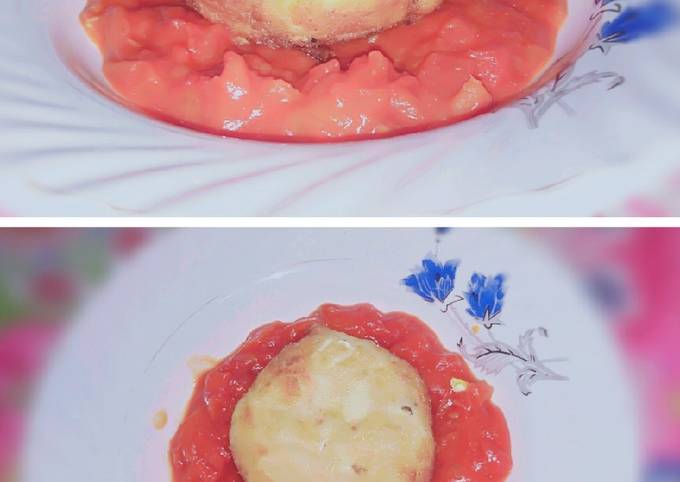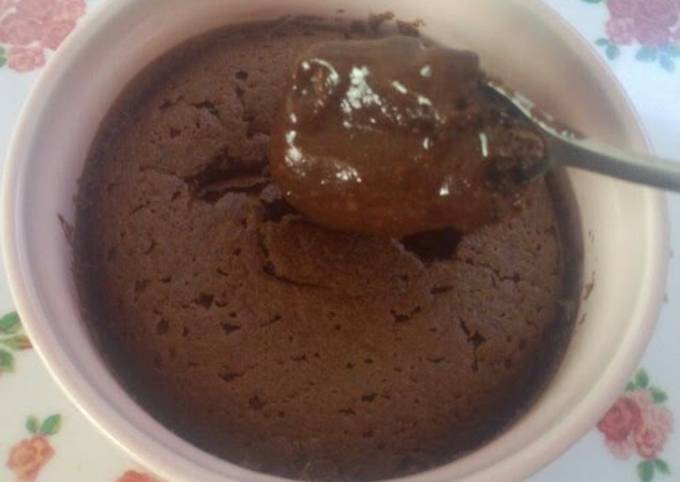
Hey everyone, it is me again, Dan, welcome to my recipe page. Today, I will show you a way to prepare a distinctive dish, light and fluffy sweet egg manjuu (dumplings). One of my favorites food recipes. For mine, I’m gonna make it a little bit tasty. This is gonna smell and look delicious.
Light and Fluffy Sweet Egg Manjuu (Dumplings) is one of the most well liked of recent trending foods on earth. It is easy, it is fast, it tastes yummy. It’s enjoyed by millions daily. Light and Fluffy Sweet Egg Manjuu (Dumplings) is something that I have loved my whole life. They’re nice and they look fantastic.
Great recipe for Light and Fluffy Sweet Egg Manjuu (Dumplings). I thought of a cute, egg-like sweet that uses high quality eggs. The microwave cooking time depends on your microwave and the humidity. I recommend that you microwave it for a shorter time in the summer.
To get started with this recipe, we must prepare a few ingredients. You can have light and fluffy sweet egg manjuu (dumplings) using 13 ingredients and 4 steps. Here is how you can achieve it.
The ingredients needed to make Light and Fluffy Sweet Egg Manjuu (Dumplings):
- Get For the microwave custard:
- Get 1 Whole Egg (a high quality egg if possible)
- Take 1 Egg yolk (a high quality egg if possible)
- Prepare 100 ml Milk
- Get 6 tbsp Sugar
- Prepare 3 tbsp ○Cake flour
- Get 2 tbsp ○Cornstarch
- Make ready 30 grams Butter
- Prepare 2 tbsp Heavy cream
- Get For the daifuku dough (sticky rice dough)
- Get 100 grams Shiratamako
- Take 50 grams Sugar
- Take 110 ml Water
Whisk to dissolve the sugar over medium-low heat. Transfer to a large bowl and set aside to cool. With a flour, egg and sugar based batter, it is in some ways similar to an American style pancake, though perhaps a little lighter and more fluffy. Manju, literally means dumpling, however, the "Taiko" aspect of the name comes from the world famous style of drum commonly used in Japanese ceremonies, rituals and performances.
Instructions to make Light and Fluffy Sweet Egg Manjuu (Dumplings):
- Make the custard. Combine the milk and 2 tablespoons of sugar, and microwave for 2 minutes. Sift the ○ ingredients into another container and microwave for 1 minute. Put the whole egg, egg yolk, and sugar (4 tablespoons) in a bowl, and beat with a handheld mixer until it turns pale. Add milk and mix well.
- Add ○ ingredients to the egg mixture and mix in well. Cover with plastic wrap and microwave for 2-3 minutes. Mix very well again, and incorporate the butter and cream while it's still hot. Line a plate with parchment paper, spread the custard on it and microwave without covering for 20 seconds (It will be a rather stiff custard!).
- Make the dough. Mix the shiratama-ko and sugar in a bowl. Keep mixing while adding the water a little at a time. When it is smooth as shown in the photo, cover with plastic wrap and microwave for 2 minutes. Mix well and microwave for another 30 seconds. Repeat the mix and microwave for 30 seconds 2 to 3 times.
- When the dough is translucent, place on a work surface dusted with katakuriko and cut into 8 portions. Roll each portion into a 7 cm diameter circle. Wrap the custard in the dough, and seal.
- Ready to serve and ENJOY!
With a flour, egg and sugar based batter, it is in some ways similar to an American style pancake, though perhaps a little lighter and more fluffy. Manju, literally means dumpling, however, the "Taiko" aspect of the name comes from the world famous style of drum commonly used in Japanese ceremonies, rituals and performances. Beat sugar and butter with an electric mixer in a large bowl until smooth and creamy. Pop the beans out of the skins with your fingers. In Japan, it is customary to eat dumplings or manjuu while bathing in the soft light of the moon.
So that is going to wrap it up with this special food light and fluffy sweet egg manjuu (dumplings) recipe. Thanks so much for reading. I am sure that you can make this at home. There is gonna be interesting food in home recipes coming up. Don’t forget to save this page in your browser, and share it to your family, colleague and friends. Thank you for reading. Go on get cooking!

